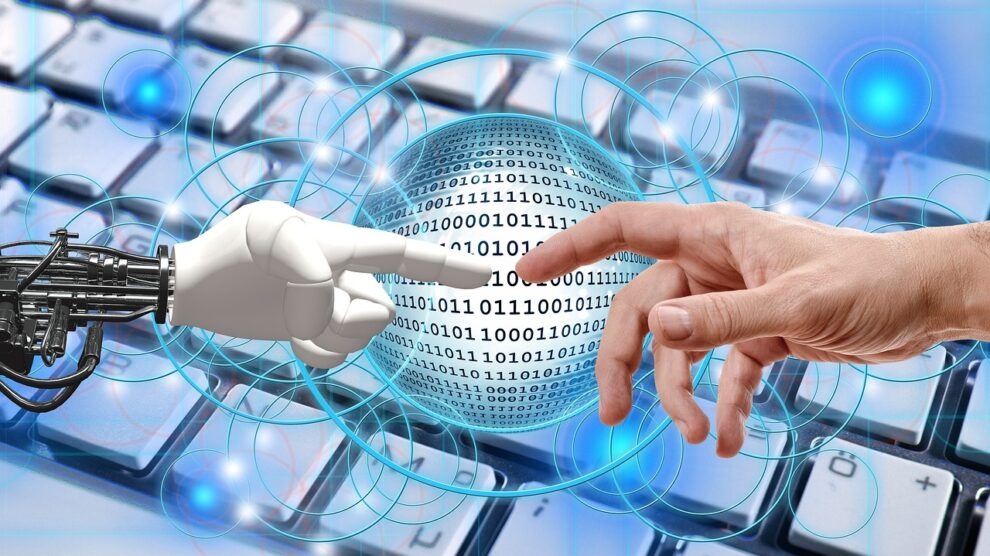The best thing about technology is that it never stops evolving. Every year, new technologies emerge that change the world. 2021 is no different. This year, we’ve seen various technologies that have impacted not only businesses but also personal lives. For example, AI and the internet collectively has led to the evolution of chatbots, and thanks to virtual assistants, they’ve become an inseparable part of our lives.
Several technologies have been a game changer in 2021. Let’s discuss some of them.
5G
The implementation of 5G will draw most of the technological attention in 2021. The fifth-generation or 5G is a technology standard for cellular communications and is the successor to the currently utilized 4G. It was introduced in 2016 by 3GPP, and eight countries are already testing it as of 2021.
More countries and cities will hop on the 5G bandwagon in 2021 as the demand for connectivity and digitization increases. A primary reason why 5G is expected to be a big deal in 2021 is that it’ll pave the way for the widespread adoption of other internet-based technologies.
The Internet of Things (IoT) is a significant technology that’s likely to get a significant boost once 5G becomes mainstream. Many internet and broadband service providers are also looking forward to 5G as it’ll be up to 100 times faster than the existing 4G network. Hence, the global adoption of 5G is likely to boost the smartphone and router industry.
QR Codes
Several experts have regarded 2020-2021 as the era of QR codes. QR codes aren’t a new technology. They’ve been around since the 1990s, before any of the modern-day technologies like AI and blockchain even existed.
However, their usage was limited to mainly China and a few other countries like India and Singapore. The West was vastly unaware of the massive benefits of QR codes. Then came the COVID-19 pandemic, which spurred the need for contactless technologies, and QR codes flourished.
Businesses worldwide began using QR codes as payment tools. Digital wallets like Alipay have been offering QR code support for years. But the uses of QR codes go beyond payments. Some other widely popular uses of QR codes are QR Code menu, touchless ordering, contact tracing.
Soon, business owners realized these untapped benefits of QR codes. What makes QR codes so unique is that they bridge the online-offline gap. You can use a dynamic QR code generator to create a QR code and link it to any online destination, such as website, landing page, social media profile, email newsletter, discount coupon, and more.
QR codes are now an essential part of the marketing strategy for small and medium-sized businesses. All businesses with a local presence, such as retail stores, hotels, restaurants, etc., create QR codes to engage their customers. QR codes are highly trackable, which helps these businesses better understand their consumers.
Artificial Intelligence
Artificial Intelligence (AI) is another technology you might’ve heard of multiple times over the past few years. Just like QR codes, AI isn’t a new technology. It has been receiving a lot of buzz over the past decade, but it never gets old. Every year, AI surprises the world with new applications that change the way we lead our daily lives. It isn’t surprising that the global AI market is projected to reach $190 billion by 2025.
One of the latest applications of AI and Machine Learning (a subset of AI) is chatbots. As people continue to ditch live support agents for self-service, chatbots and intelligent assistants are booming. Take Google Assistant, Siri, and Alexa, for example. Back in the day, the use of chatbots was limited to business endeavors only, but now they’ve become a part of personal and household tasks.
Another significant application of AI is Big Data Analytics. In this customer-centric landscape, companies are doing whatever they can to understand their customers better. This has increased the importance of Big Data Analytics and Business Intelligence, which AI powers.
Edge Computing
During the mid-2010s, cloud computing entered the mainstream and disrupted the way businesses managed their operations. Companies started ditching on-premise legacy systems and adopted cloud-based software solutions. It also marked the emergence of the SaaS industry, which is now valued at over $150 billion.
While cloud computing is no longer a new trend, Edge computing is. While cloud computing has several benefits, some of its shortcomings have come to light over the years. Companies are struggling when it comes to dealing with the increasing quantity of data and fluctuating business landscape.
Edge computing is a cloud computing approach designed to streamline the data collection and analysis process.
It enables you to bypass cloud computing latency and get data to the data center at the right time. This allows businesses to process time-sensitive data from anywhere and consolidate to a centralized location even with limited or no connectivity.
Companies can use edge computing to set up mini data centers in remote locations. Also, as IoT continues to rise, the edge computing sector, which is currently valued at $6.72 billion, will only grow further.
Blockchain
If Bitcoin is the only thing that comes to your mind when you think of blockchain, you’re not alone. Cryptocurrency is arguably the most significant application of blockchain that has taken the world by storm. And the recent listing of Coinbase on NASDAQ has further propelled the crypto sector and paved the way for its global acceptance.
But the use of blockchain goes beyond cryptocurrency. The data security and anonymity it offers can be leveraged in many other ways. For example, the British Columbia government used Hyperledger Indy in 2019 to create a public directory of businesses. Finastra, one of the leading fintech companies globally, developed a blockchain solution to facilitate loan arrangements.
In 2021, businesses are using blockchain to share records securely and without any errors. For example, medical errors are a significant cause of hospital fatalities. Blockchain-based data sharing methods resolve this hurdle. Many companies use blockchain to level up their supply chain management efforts. Secure payments, tracking, and managing agreements are some blockchain applications in supply chain management.
Virtual Reality and Augmented Reality
The final technologies on the list are Virtual Reality (VR) and Augmented Reality (AR). While VR and AR are different technologies, they are often used for the same purpose – to provide an immersive experience to the user.
Pokemon Go is a classic example of AR in action. Snapchat has been using AR for years to provide immersive filters to its users. Several games, such as Half-Life, L.A. Noire, and Rez Infinite, give a VR experience to the consumers. The use of VR extends to the military. The US Navy, Army, and Coast Guard ship captains are provided training using VirtualShip, a VR-based simulation software solution.
In 2021, the applications of AR/VR will only increase. The global AR/VR market is projected to reach $209.2 billion by 2022 amid the rising applications of these technologies. Several companies are using AR/VR to create human-machine interfaces. Back in the day, when these technologies like AI, robotics, and AR were on the rise, many people predicted that machines would replace human labor.
Instead of replacing humans, companies are using these technologies to enhance their performance. For example, AR enables humans and machines to work together in a unified environment by reducing a product’s time to market and improving design speeds.
Augmented & virtual reality has made life easier for businesses with 3D design, such as architects, real estate developers, modelers, and more. AR/VR has become an essential part of the 3D design process. Many real estate companies also use VR to provide virtual property tours to potential buyers. This eliminates the need for physically visiting a property.
Some More Technologies to Watch Out for
Since new technologies continue to emerge, it isn’t possible to compile all of them in a single list. Here are some other technologies that have been game-changers in 2021.
- Automated risk management
- Low-code/no-code
- Voice pay solutions
- Digital health tech
- Embedded SIM
- Quantum computing
Conclusion
As the world continues to become more digital and tech-driven, new technologies will continue to emerge and change the way people lead their lives. These emerging technologies have also opened various career opportunities for tech professionals. If you’re a tech enthusiast, it’s a great time to be alive, as the upcoming years will see the rise of various other technologies.





